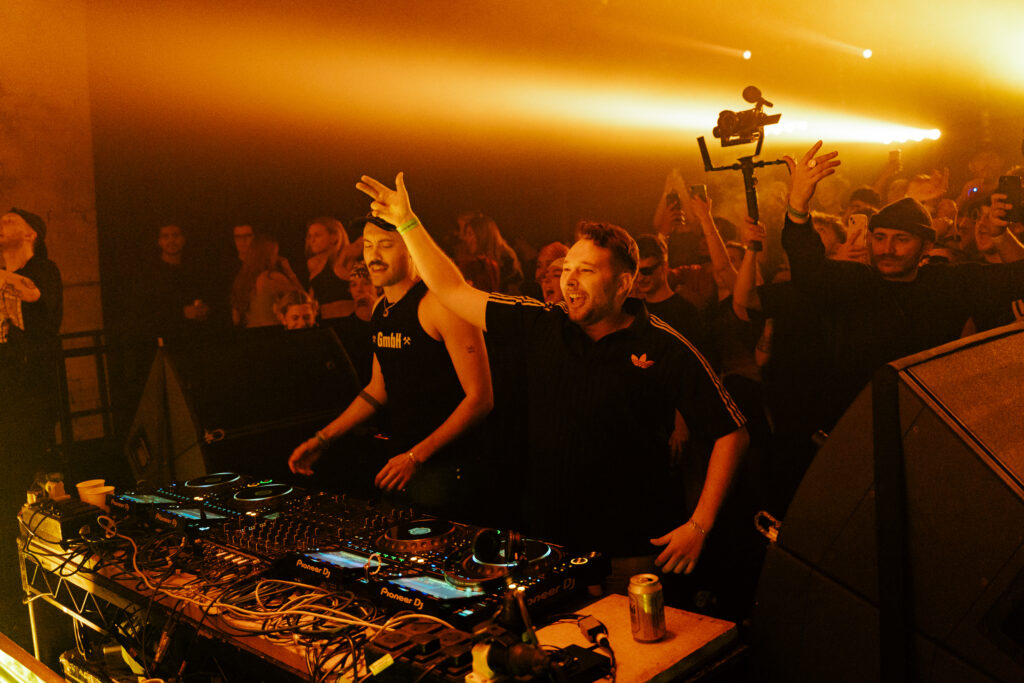
Dance Music is Back. Eurotrance U.S. Takeover is Guaranteed
Share
Author: Casey
The feeling of getting lost in trance music is an amazing experience—it stirs something primal and euphoric in listeners. But so much of the material today can feel unremarkable, too minimal, or too dark. Across many genres outside EDM— making fun, unserious music has seen a resurgence.
And what style of music is more fun and unserious than classic euro apres ski tunes?
Upbeat synths, surface level, catchy lyrics. Mix in some punchy bass, aggressive hats, raw, analog-driven sound and trance elements and you have in theory created the ultimate catalyst of dance. A genre that's both fresh and nostalgic, a celebration of sound that doesn’t take itself too seriously.
Eurotrance.
These artists pull from the past, but their sound is anything but dated. Tracks are infused with rolling basslines, gated vocals, and hypnotic arpeggios reminiscent of ‘90s and early ‘00s dance music. But unlike the radio-friendly trance of the 2010s, this movement strips away the overproduced festival drops, bringing the focus back to groove and momentum. This subgenre has been put up against the grain of traditional club music in Berlin and Australia and is thriving, emerging as the antidote to techno fatigue faced by many long time lovers of electronic music and casuals alike.
The TikTok algorithm has undeniably fueled the explosion of this subgenre. Marlon Hoffstadt and Malugi’s now-infamous Boiler Room closing with Morgan Seatree’s “Say My Name” (Florence and the Machine remix) may be overplayed at this point, but there’s no denying its impact—it introduced countless Americans to Malugi and DJ Daddy Trance, two of the genre’s biggest names.
The techno edge lords and elitists (as one myself), are keen to shit on this music for its gain in popularity. Common claims include: “same song every time”, “fake techno”, “shallow”, or “eurotrash”. Not only are they ignoring the history behind this subgenre, but also the place it sits, being: the intersection of trance, eurodance, techno, EDM, and hard house.
Artists from different subgenres, like Max Dean and Chris Stussy, have embraced elements of this style in recent releases, with its influence becoming increasingly evident in their IDs and track selections. Meanwhile, artists operating in adjacent spaces—Mall Grab, Hannah Laing, Kettama, and KI/KI—are undeniably part of this conversation as well. While their productions tend to be rawer, less polished, and more experimental, there’s no denying that the DNA of classic trance and European dance music has woven itself into their sound, bridging the gap between underground grit and euphoric, high-energy club music.
As Eurotrance continues to gain momentum, it’s poised to follow in the footsteps of UK Garage, which in the last 4 years broke through to the American mainstream. In the next year, the style will likely reach a tipping point, making its way into the cultural fabric of U.S. dance music. The rising popularity is evidence that this sound isn’t just a handful of niche DJs curation; this is a movement that has been building and evolving for years— and it’s about to go fully mainstream. With its infectious energy and broad appeal, Eurotrance is on track to become as dominant, if not more, than UKG in the States.
Expect to see Eurotrance dominate festival lineups, clubs, and even crossover into pop culture (surprise, it already has). The U.S. is ready for a new wave of dance music, and Eurotrance is leading the charge.
This type of music is truly fun. High energy, creative melodies, grooves and pockets throughout each and every track. It’s a warm but aggressive style that is sure to find a home on at least one of your playlists.
To all my fellow snobs rolling their eyes: shut the fuck up, listen to this shit and dance. Maybe you’ll actually crack a smile on the dance floor for once ;)
Check out the official “Eurotrance: Change my Mind” Playlist Here